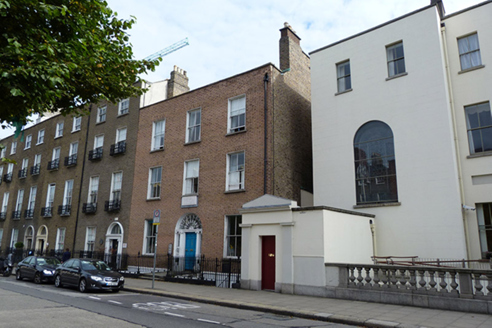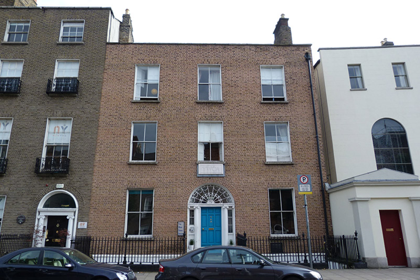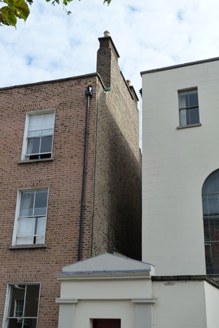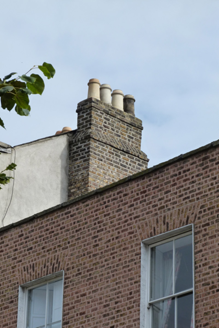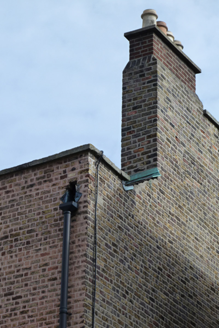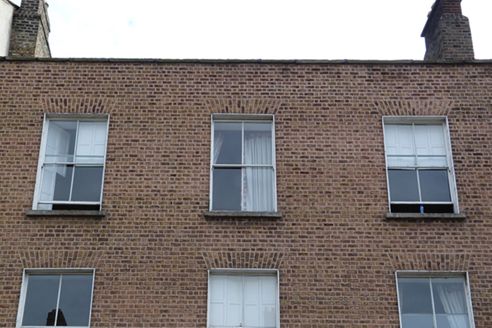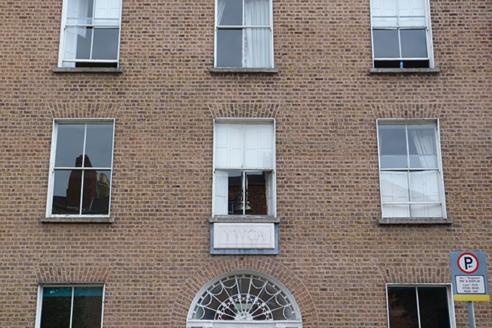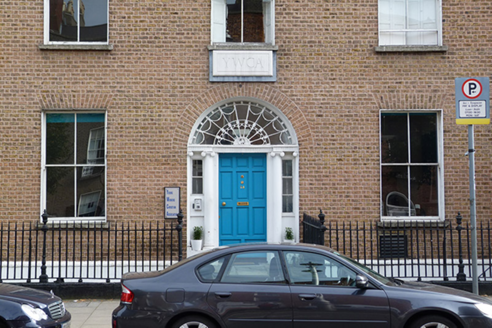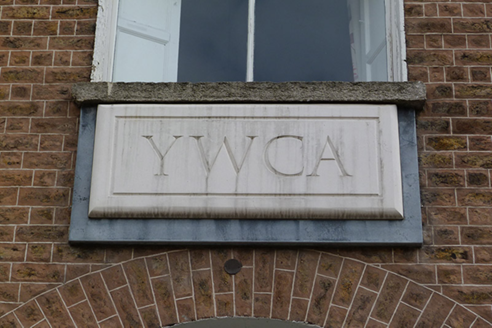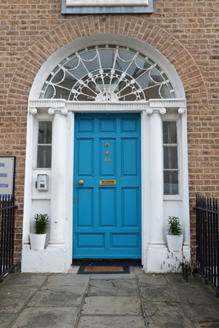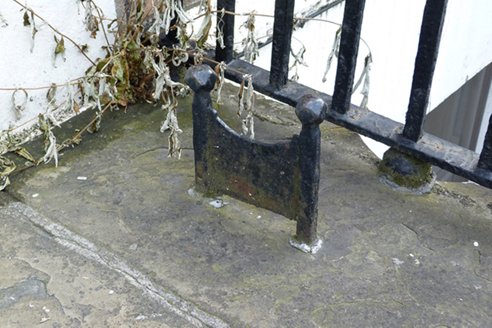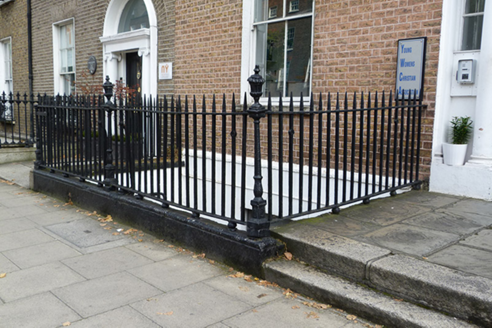Survey Data
Reg No
50100642
Rating
Regional
Categories of Special Interest
Architectural, Artistic
Previous Name
House of Refuge
Original Use
House
In Use As
Hostel (charitable)
Date
1810 - 1850
Coordinates
316848, 233103
Date Recorded
29/08/2016
Date Updated
--/--/--
Description
Attached three-bay three-storey former house over basement, built c. 1830, having flat-roofed three-storey return to west end of rear. Now in use as hostel. Pitched single-span roof with dormer windows front and rear, behind brick parapet with granite coping, shouldered brick chimneystacks with clay pots, and replacement uPVC rainwater goods to east. Flemish bond brown brick walls on granite plinth course over painted rendered basement walls. Square-headed window openings with raised rendered reveals and painted granite sills. Timber sliding sash windows, one-over-one pane to basement and two-over-two pane elsewhere to front; two-over-two pane timber sash windows to rear. Round-headed tripartite doorcase with rendered surround, fluted frieze and cornice, Ionic columns with respond pilasters framing sidelights, elaborate fanlight and eleven-panel timber door. Stone name plaque over door. Sandstone platform with cast-iron boot-scrape and two granite steps. Wrought-iron railings with decorative corner posts on moulded granite plinth enclosing basement area. Wrought-iron gate and concrete steps with simple metal rail lead down to basement area, latter with stone flags. Additions to rear and recent two-storey building to rear of plot.
Appraisal
No. 64 Baggot Street Lower is a mid-nineteenth-century former house, forming part of a street that has been well retained. Unusually it is three bays wide. It displays the well-balanced proportions and graded fenestration pattern typical of the period and is enriched with a Ionic doorcase with a particularly fine fanlight and fluted frieze. Its intact setting, with a decorative boot-scrape and railings, contributes to the intact appearance of the streetscape. This street, one of the ancient routeways out of the city of Dublin, was named for Robert Baggot, a local landowner. It was developed in the late eighteenth and early nineteenth centuries as part of the eastern expansion of the Georgian city. There are many signs of speculative building across the architectural fabric of the street, including variation in levels, materials and detailing.
